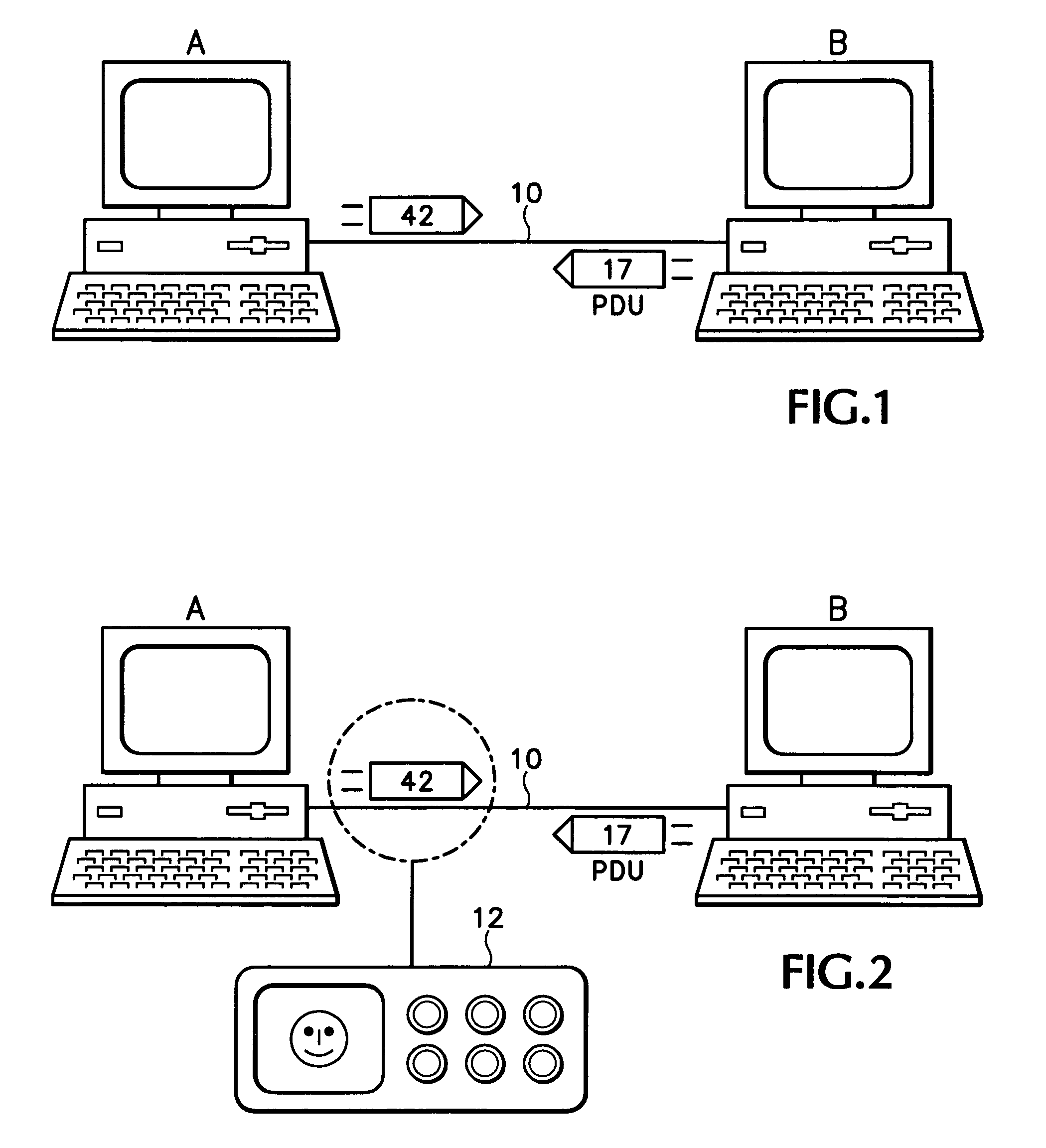Process for learning the basic finite automation of a protocol implementation
- Summary
- Abstract
- Description
- Claims
- Application Information
AI Technical Summary
Benefits of technology
Problems solved by technology
Method used
Image
Examples
Embodiment Construction
[0032]As seen in FIG. 2 in which items identical with those of FIG. 1 are marked with identical reference characters, a trace analyzer 12 is coupled to the communication medium 10 so as to detect the data exchanged between the communication partners A and B. In doing so, the trace analyzer 12 reads any exchanged messages without changing them or otherwise affecting the ongoing communication between A and B. Although the trace analyzer knows the various message types of the communication, i.e., the protocol syntax, it has no knowledge of the protocol structure, i.e., how the messages are structured and how the message types are employed by the communication partners involved for performing communications. The trace analyzer 12 does not know reference protocols.
[0033]FIG. 3 shows the logic inclusion of the analyzing algorithm in the communication process. The analyzing algorithm reads the PDUs of a layer n, n≧1, from the protocol stack and, in a manner described hereinafter, derives r...
PUM
 Login to View More
Login to View More Abstract
Description
Claims
Application Information
 Login to View More
Login to View More - R&D
- Intellectual Property
- Life Sciences
- Materials
- Tech Scout
- Unparalleled Data Quality
- Higher Quality Content
- 60% Fewer Hallucinations
Browse by: Latest US Patents, China's latest patents, Technical Efficacy Thesaurus, Application Domain, Technology Topic, Popular Technical Reports.
© 2025 PatSnap. All rights reserved.Legal|Privacy policy|Modern Slavery Act Transparency Statement|Sitemap|About US| Contact US: help@patsnap.com



